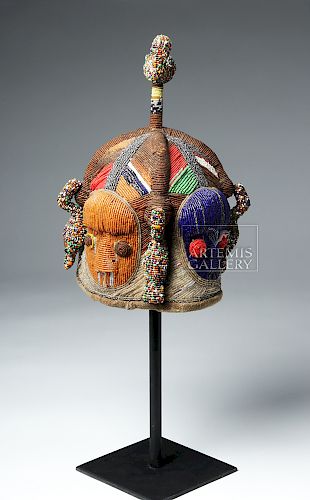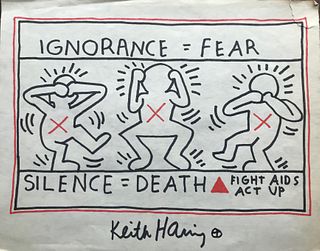20th C. African Yoruba Beaded Ade Oba Helmet Crown
Lot 39
About Seller
Artemis Fine Arts
686 S Taylor Ave, Ste 106
Louisville, CO 80027
United States
Selling antiquities, ancient and ethnographic art online since 1993, Artemis Gallery specializes in Classical Antiquities (Egyptian, Greek, Roman, Near Eastern), Asian, Pre-Columbian, African / Tribal / Oceanographic art. Our extensive inventory includes pottery, stone, metal, wood, glass and textil...Read more
Categories
Estimate:
$1,500 - $2,000
Absentee vs Live bid
Two ways to bid:
- Leave a max absentee bid and the platform will bid on your behalf up to your maximum bid during the live auction.
- Bid live during the auction and your bids will be submitted real-time to the auctioneer.
Bid Increments
| Price | Bid Increment |
|---|---|
| $0 | $25 |
| $300 | $50 |
| $1,000 | $100 |
| $2,000 | $250 |
| $5,000 | $500 |
| $10,000 | $1,000 |
| $20,000 | $2,500 |
| $50,000 | $5,000 |
| $100,000 | $10,000 |
| $200,000 | $20,000 |
About Auction
By Artemis Fine Arts
May 10, 2018
Set Reminder
2018-05-10 10:00:00
2018-05-10 10:00:00
America/New_York
Bidsquare
Bidsquare : Fine Ethnographic / Asian / Ancient Art
https://www.bidsquare.com/auctions/artemis-gallery/fine-ethnographic-asian-ancient-art-3213
Featuring antiquities from around the world including Pre-Columbian, Tribal, Classical, Asian, so much more! Artemis Fine Arts info@artemisfinearts.com
Featuring antiquities from around the world including Pre-Columbian, Tribal, Classical, Asian, so much more! Artemis Fine Arts info@artemisfinearts.com
- Lot Description
Western Africa, Nigeria, Yoruba peoples, ca. mid 20th century CE. A large helmet mask, comprised of several textile swaths sewn together and reinforced along the rim, meant to be worn atop one's head rather than over the face. The exterior displays a meticulously-arranged display of four abstract anthropomorphic faces, four stylized abstract avian figures, and an upper avian-form finial atop a slender wooden stake, all brought forth using thousands of multi-colored seed beads in hues of crimson, emerald, sapphire, citrine, pearl, jet, topaz, amethyst, and coral. Headwear like this example, known as an "ade oba" (or adenla), were used primarily as the crown for the reigning king to symbolize his wealth, power, influence, and responsibility over those he governed. Comes with museum-quality display stand. Size: 12.75" H (32.4 cm); 22.5" H (57.2 cm) on included custom stand.
The “ade oba” (or king’s beaded crown) is the quintessential symbol of kingship within the Yoruba culture. Beads like those used on these masks were not made by the Yoruba peoples but rather imported from the British Isles. Such seed beads exhibiting a blue hue, like those seen on this mask, were highly-prized because such sapphire colors were not found in naturally-occurring substances.
This type of kingly helmet mask was meant to depersonalize the individual wearing the crown and instead emphasize his official position. The smaller masks around the helmet symbolize the many roles the king must embody when carrying out his duties, and the birds flanking each face represent his connection to the natural world and not just the society he presides over.
Provenance: private Eason Eige collection, Albuquerque, New Mexico, USA
All items legal to buy/sell under U.S. Statute covering cultural patrimony Code 2600, CHAPTER 14, and are guaranteed to be as described or your money back.
A Certificate of Authenticity will accompany all winning bids.
We ship worldwide and handle all shipping in-house for your convenience.
#131192Age-commensurate surface wear, light discoloration and fading to bead colors, with some loosening to stitches, otherwise intact and near-choice. Light earthen deposits on some beads. Avian finial is removable.Condition
- Shipping Info
-
All shipping is handled in-house for your convenience. Your invoice from Artemis Gallery will include shipping calculation instructions. If in doubt, please inquire BEFORE bidding for estimated shipping costs for individual items.
-
- Buyer's Premium



 EUR
EUR CAD
CAD AUD
AUD GBP
GBP MXN
MXN HKD
HKD CNY
CNY MYR
MYR SEK
SEK SGD
SGD CHF
CHF THB
THB















